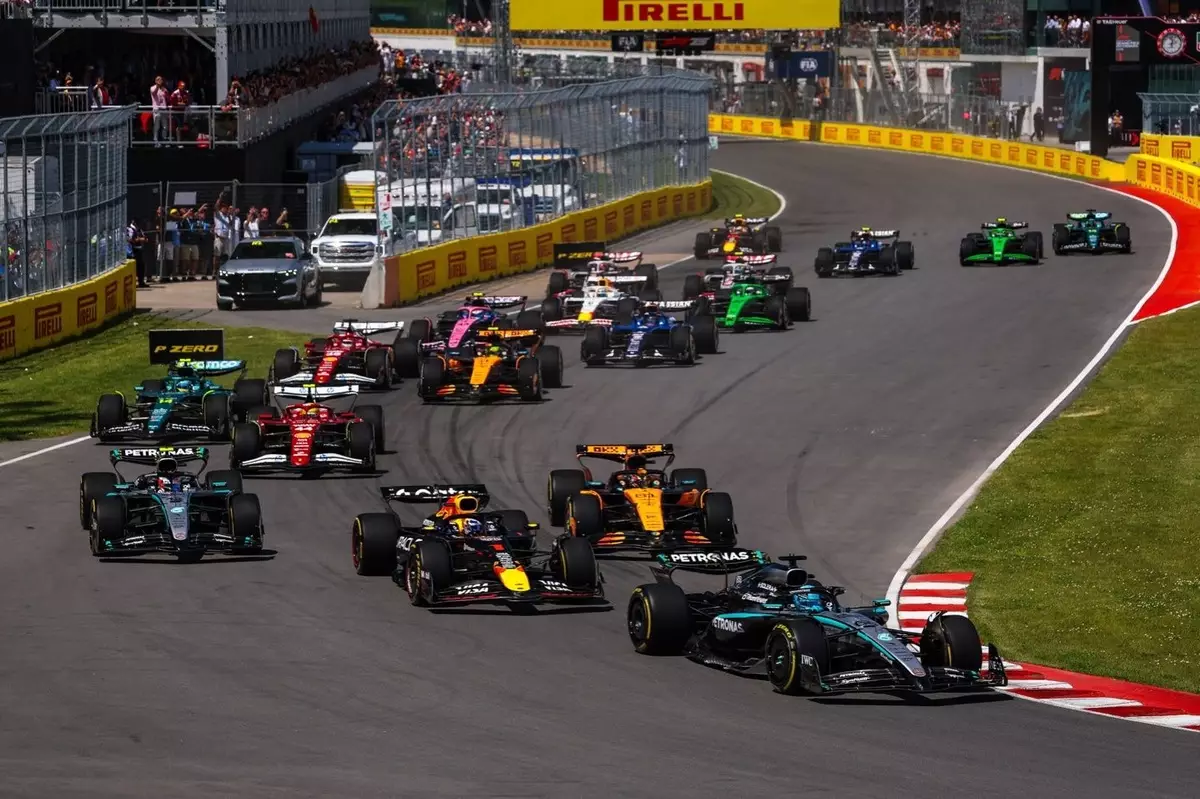In an era when environmental concerns dominate global consciousness, Formula 1 is boldly steering its high-octane engine towards a greener future. Far from resting on its laurels or merely paying lip service to sustainability, F1 demonstrates that even the most adrenaline-fueled sport can lead the way in planetary stewardship. The recent strides made by the championship showcase an ambitious yet achievable vision: attain net zero emissions by 2030. This commitment is not an empty promise but a carefully calibrated strategy, driven by measurable results that challenge traditional perceptions of motorsport’s environmental impact.
Indeed, F1’s progress over the past seven years is impressive—reducing its carbon footprint by roughly 26% since 2018. This reduction is particularly notable given the sport’s global expansion and increased fan engagement, which could have otherwise dramatically inflated emissions. The doubling of race events from 12 to 24 fixtures annually vividly illustrates how the sport has managed this growth without a proportional increase in its environmental footprint, thanks to innovative operational changes and sustainable practices. The message is clear: the pursuit of adrenaline and the pursuit of sustainability are not mutually exclusive.
Strategic Initiatives Driving Concrete Change
Central to this transformation is the implementation of comprehensive policies targeting every facet of the sport. Factories have transitioned to renewable energy sources, resulting in a staggering 59% decrease in emissions. Logistics operations have also received a green overhaul, with the adoption of biofuel-powered freight trucks in Europe and the use of more efficient aircraft such as Boeing 777F freighters, cutting transportation emissions by 9%. Remote working arrangements and digital innovations have contributed to a 25% cut in travel-related emissions, fundamentally changing how the team operates behind the scenes.
A pivotal upcoming milestone in F1’s sustainability road map involves the widespread use of advanced biofuels across all cars. This move promises to create a ripple effect, not only reducing the environmental impact during race weekends but also inspiring auto manufacturers and consumers alike to embrace cleaner fuels. The significance of this initiative extends beyond the racetrack, hinting at a future where sustainable fuels could revolutionize road transport and aviation industries.
Beyond logistics and fuels, the sport’s infrastructural and operational sustainability gains have been equally profound. The expanded use of renewable energy within event venues, combined with more efficient event management, exemplifies a sport that is embracing sustainability as a core operational principle rather than an afterthought. These efforts are complemented by technological innovations, which continually push the boundaries of performance while simultaneously reducing ecological footprints.
The Ethical Victory of Innovation-Driven Growth
Beyond the stark numbers and operational shifts, the true power of F1’s sustainability campaign lies in its philosophical shift. The sport’s leadership openly champions innovation as a tool for achieving environmental goals, asserting that progress and environmental responsibility are not mutually exclusive but mutually reinforcing. There’s a conviction that F1’s visibility and global reach can serve as a catalyst, influencing industries and consumers worldwide.
CEO Stefano Domenicali’s statements underscore this sentiment—highlighting that their strategic initiatives are rooted in a broader societal impact rather than isolated corporate responsibility. By embodying progress, F1 redefines what it means to be a high-performance sport in the twenty-first century. It demonstrates that technological advancements in race cars, sustainable fuels, and operational efficiency generate tangible results that extend beyond racing and into broader industrial practices.
The question remains: can Ferrari, Mercedes, or other global industries follow suit and embed sustainability at their core? F1’s evolving blueprint offers an inspiring blueprint, showing that with deliberate planning, transparent metrics, and relentless innovation, even the most seemingly unyielding sectors can transform and thrive responsibly.
In a world increasingly demanding accountability and environmental consciousness, F1’s brave embrace of sustainability is nothing short of revolutionary—lending hope that the pursuit of excellence doesn’t have to destroy the planet but can be the driving force for positive change.

